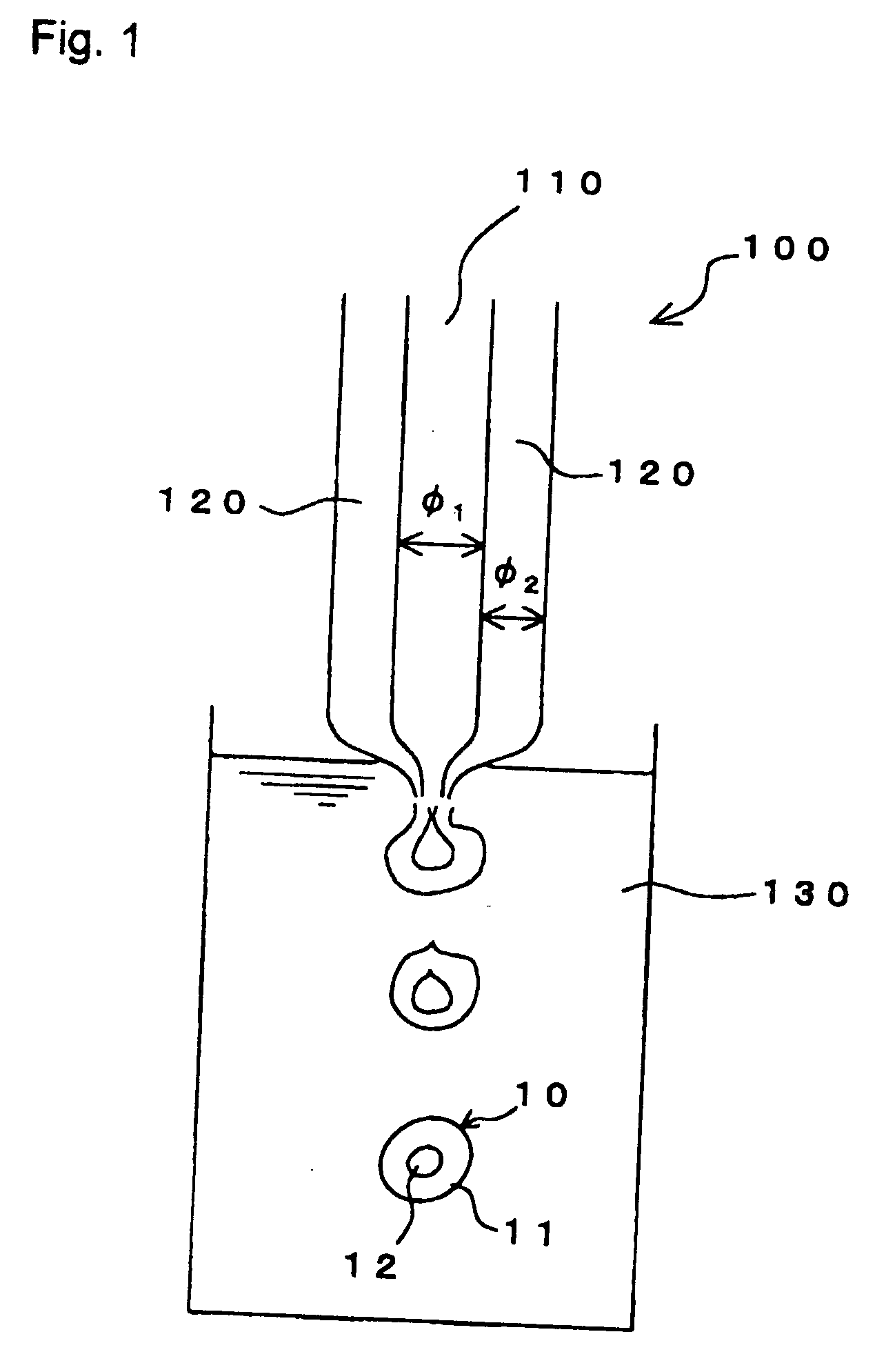Biodegradable articles obtained from enzymatically synthesized amylose
a technology of amylose and enzymatically synthesized amylose, which is applied in the direction of surgical adhesives, powder delivery, microcapsules, etc., can solve the problem of not providing entirely linear amylose, and achieve the effect of reducing the defect of natural amylos
- Summary
- Abstract
- Description
- Claims
- Application Information
AI Technical Summary
Benefits of technology
Problems solved by technology
Method used
Image
Examples
example 1 (
Synthesis of Enzyme-Synthesized Amylose (DS:0.0)
[0071] Sixty gram of Glucose-1-phosphate (G-1-P) and 5 mg of maltopentaose were dissolved in 1.3 litter of 0.2 M maleic acid buffer solution (pH 6.0), to which 1,500 unit of phosphorylase derived from potatoes was added. It was then mixed at 50.degree. C. to react. After reacting 86 hours, the solution was heated to inactivate the enzyme and filtered with glass filter to remove the inactivated enzyme. To the filtrate, two times volume amount of ethanol was added to precipitate the amylose and centrifugally separated. The precipitate was rinsed two times with 300 mili-little of a mixture of water and ethanol (1:1) to remove the co-present G-1-P. It was then rinsed two times with ethanol and vacuum dried at 70.degree. C. The resulting amylose was 18.7 g. One unit of phosphorylase is an amount that 1 .mu.mol of phosphoric acid is produced in one minute. The resulting enzyme-synthesized amylose had a Mw 820 kDa and a Mw / Mn of 1.05.
[0072] T...
example 2 (
Synthesis of Enzyme-Synthesized Amylose)
[0075] An amylose having Mw 1,400 kDa was obtained with reaction time of 75 hours as generally described in Example 1, with the exception that an amount of G-1-P was increased to 100 g and an amount of maltopentaose was reduced to 2.5 mg. The resulting amylose had Mw / Mn of 1.07 and an yield of 17 g.
[0076] This experiment proved that a change of a weight ratio of G-1-P and maltopentaose could control molecular weight of the amylose. The extension of reaction time made it possible to obtain high molecular weight amylose.
example 3 (
Synthesis of Enzyme Synthesized Amylose)
[0077] This example compares characteristics of the enzyme synthesized amylose of the present invention with those of the amylose obtained by art-known AMSU method.
[0078] Each one litter reaction vessel was charged with 6 mM phosphoric acid buffer solution (pH 7.0), 106 mM sucrose and malto oligosaccharide having each different concentration (2,200 mg / litter, 880 mg / litter, 176 mg / litter, 132 mg / litter, 44 mg / litter or 8.8 mg / litter), to which 1 unit / mili-little of purified glucan phosphorylase derived from potatoes and 1 unit / mili-little of sucrose phosphorylase derived from Leuconostoc mesentroides were added and kept at 37.degree. C. for 16 hours to terminate reaction, thus obtaining amylose. Yield (%), weight average molecular weight (Mw) and molecular weight distribution (Mw / Mn) of the resulting amylose were determined and the results show in the following Table 1.
1TABLE 1 Concentration (mg / litter) of malto oligosaccharide Yield Mw Mw / Ap...
PUM
| Property | Measurement | Unit |
|---|---|---|
| Atomic weight | aaaaa | aaaaa |
| Atomic weight | aaaaa | aaaaa |
| Percent by mass | aaaaa | aaaaa |
Abstract
Description
Claims
Application Information
 Login to View More
Login to View More - R&D
- Intellectual Property
- Life Sciences
- Materials
- Tech Scout
- Unparalleled Data Quality
- Higher Quality Content
- 60% Fewer Hallucinations
Browse by: Latest US Patents, China's latest patents, Technical Efficacy Thesaurus, Application Domain, Technology Topic, Popular Technical Reports.
© 2025 PatSnap. All rights reserved.Legal|Privacy policy|Modern Slavery Act Transparency Statement|Sitemap|About US| Contact US: help@patsnap.com

